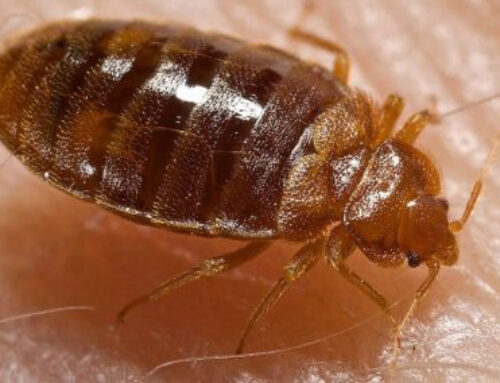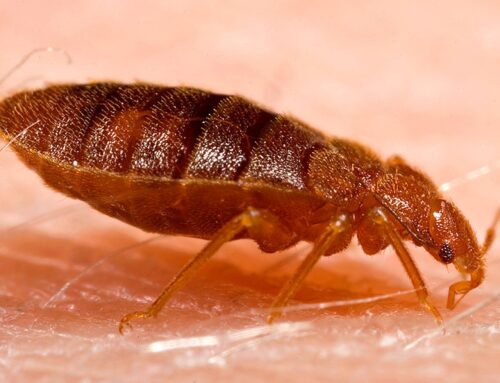Scientific Name of a Bed Bug
The scientific classification of the most common bed bug that plagues humans:
- Kingdom – Animalia
- Phylum – Arthropoda
- Class – Insecta
- Order – Hemiptera
- Family – Cimicidae
- Genus – Cimex
- Species – Lectularius
Biology of a Bed Bug
Bed bugs are small insects. A fully grown adult grows to be about the size of an apple seed. Unfed bed bugs are as flat as a sheet of paper. One amazing thing about bed bugs’ bodies is that they are adapted for a large meal. On average, bed bugs only need to eat once a week, therefore a bed bug meal must be filling so they can sustain. After a meal, bed bugs’ size can increase by 50 percent in length and 200 percent in weight!
Bed bugs use a pretty sophisticated locating system to hone in on possible meals. By detecting the carbon dioxide emitted by a host’s breathing, the warmth produced by a host’s body and certain chemicals emitted by hosts, bed bugs accurately sense a potential meal and can travel up to 100 feet in a night to eat.
Bedbugs reproduce by a gruesome strategy appropriately named “traumatic insemination,” in which the male stabs the female’s abdomen and injects sperm into the wound. While bed bugs give off pheromones in order to distinguish males from females, male bed bugs have been known to try and inseminate other males accidentally. This can happen because when looking to mate, male bed bugs’ main preference in a mate is a large size. A full and recently fed male can be mistaken by other bugs for a female.
During their life cycle, females can lay more than 500 eggs, which hatch and go through five immature “nymph” stages before reaching their adult form, molting after each phase. The molts are left in the places the bugs hide and are a sign of infestation.

A Bed Bug’s Lifespan and Ability to Survive
Bed bugs’ lifespan can fluctuate depending on the specific species and their ability to feed easily. Most bed bugs live around one year, even with no oxygen.
Bed bugs have the ability to survive a wide range of temperatures. When the temperature falls below 61 degrees Fahrenheit, the adult bugs enter diapause, slowing their bodies to a state that helps them survive. Bed bugs can live at least 5 days in temperatures as low as 14 degrees Fahrenheit. It has been shown that bed bugs die after fifteen minutes of exposure to temperatures at -26 degrees Fahrenheit or below.
On the opposite end of the temperature spectrum, bed bugs can survive relatively hot temperatures as well. Their thermal death point is right at 113 degrees Fahrenheit and all stages of life die after 7 minutes at temperatures of 115 degrees Fahrenheit.




